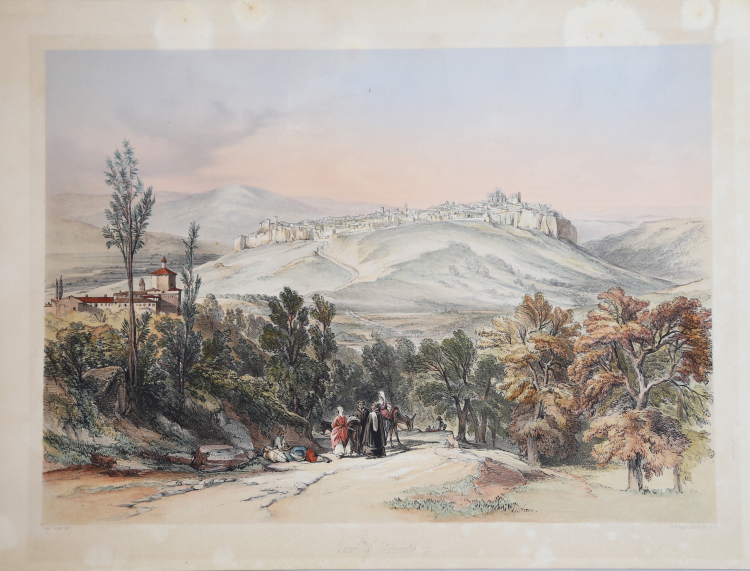



| Reference: | S13482 |
| Author | Edward LEAR |
| Year: | 1843 ca. |
| Zone: | Orvieto |
| Printed: | London |
| Measures: | 430 x 310 mm |


| Reference: | S13482 |
| Author | Edward LEAR |
| Year: | 1843 ca. |
| Zone: | Orvieto |
| Printed: | London |
| Measures: | 430 x 310 mm |
View taken from the series titledThe Ecclesiastical Architecture Of Italy. From The Time Of Constantine To The Fifteenth Century With An Introduction And Text By Henry Gally Knight Esq.
Published By Henry Bohn, London: 1842. (-1844.)
The plates printed in full color are signed as drawn by G. Moore, D. Quaglio or J.M. Knapp, and “Owen Jones Lithochromotog”. Most other plates are signed as drawn or sketched by J.M. Knapp, D. Quaglio, Giulio (or 'J.') Aliusetti (or Aluisetti), G. Moore (or 'G.B. Moore'), Hallman, L. Feuliani, or Edwd. Lear, and as lithographed by G. Moore. Most carry the imprint of Day & Haghe 'lithogrs. to the Queen'. The front paste-down of Volume I carries the binder's ticket, 'Bound By Remnant & Edmunds London', and the bookseller's ticket, 'Sold By Molteno, Printseller. 20, Pall Mall.'
The two volumes of the work originally appeared separately. The plates show churches in Rome, Ravenna, Toscanella, Pavia, Lucca, Bergamo, Florence, Bologna, Breschia, Milan, Venice, Arezzo, Montefiascone, Pisa, Bari, Modena, Ancona, Murano, Spoleto, San Leone, Verona, San Donino, Trent, Vercelli, Assisi, Padua, Cremona, Parma, Siena, Orvieto, Perugia, San Quirico, Piacenza, Genoa, Ferrara, Monza and Rimini.
Tinted lithograph, finely hand coloured, in perfect condition.
|
Cremonini p. 225/226, 143.
|
Edward LEAR (Holloway, Londra, 1812 - Sanremo, 1888)
|
English painter, draughtsman, illustrator and writer. In the 1860s Lear described himself as ‘Greek Topographical Painter par excellence’, aspiring to the title of ‘Painter-Laureate and Boshproducing-Luminary forthwith’. This whimsical summary of his versatile activities as topographical draughtsman, oil painter, traveller, writer and illustrator of nonsense rhymes and stories is typical of Lear’s idiosyncratic literary style. It reflected his eccentric personality. He was epileptic and prone to fits of deep depression. In addition, owing to family misfortunes, he was brought up by his eldest sister Ann. The neglect of his mother, ill-health, weak sight and poverty all contributed to a lifelong sense of insecurity.
|
|
Cremonini p. 225/226, 143.
|
Edward LEAR (Holloway, Londra, 1812 - Sanremo, 1888)
|
English painter, draughtsman, illustrator and writer. In the 1860s Lear described himself as ‘Greek Topographical Painter par excellence’, aspiring to the title of ‘Painter-Laureate and Boshproducing-Luminary forthwith’. This whimsical summary of his versatile activities as topographical draughtsman, oil painter, traveller, writer and illustrator of nonsense rhymes and stories is typical of Lear’s idiosyncratic literary style. It reflected his eccentric personality. He was epileptic and prone to fits of deep depression. In addition, owing to family misfortunes, he was brought up by his eldest sister Ann. The neglect of his mother, ill-health, weak sight and poverty all contributed to a lifelong sense of insecurity.
|